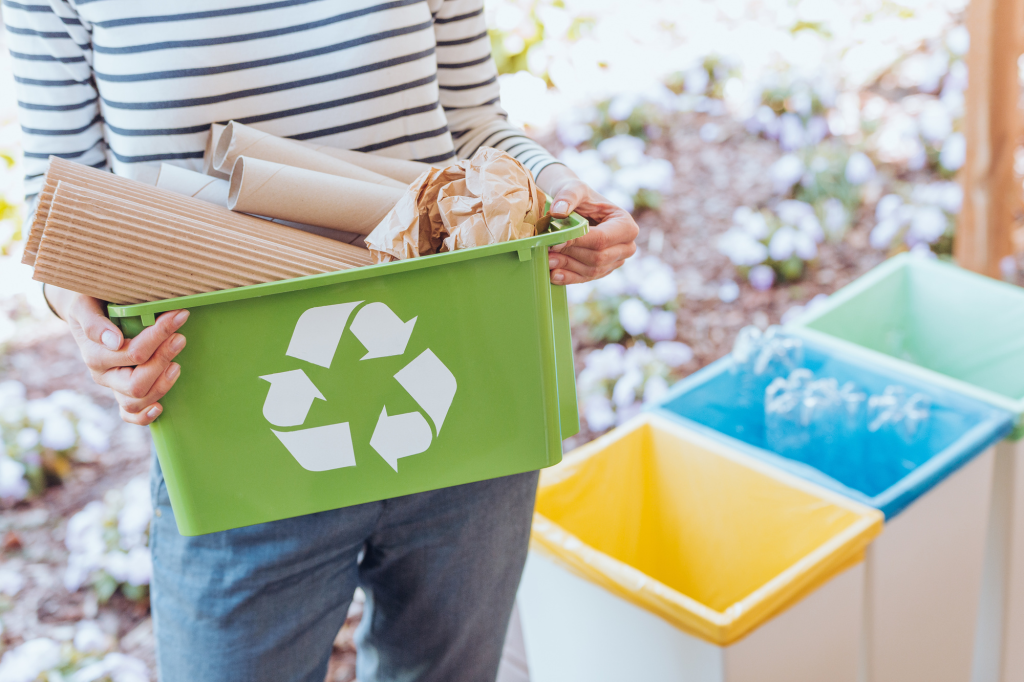In our daily lives, we generate considerable waste without always realizing the cumulative impact on the environment. The good news is that small, consistent changes in household habits can significantly reduce this waste, saving money while helping protect our planet. By adopting simple waste reduction strategies, every household can contribute to a cleaner, more sustainable future.
Understanding Household Waste
The average family generates surprising amounts of waste—from food scraps and packaging to worn-out items and digital clutter. Before exploring solutions, it’s helpful to understand the main categories of household waste:
- Food waste: Uneaten leftovers, spoiled produce, and food scraps
- Packaging waste: Boxes, bags, containers, and wrappings
- Paper waste: Mail, magazines, documents, and newspapers
- Plastic waste: Single-use items, containers, and packaging
- Electronic waste: Old devices, batteries, and accessories
- Textile waste: Unwanted clothing, linens, and fabric items
- Water waste: Excessive water usage in daily activities

By targeting these specific categories with intentional strategies, you can make significant progress in reducing your household’s environmental footprint.
Kitchen Waste Reduction Strategies
The kitchen is typically where most household waste originates, making it the perfect place to begin your waste reduction journey.
Smart Food Shopping and Storage
Reducing food waste starts before you even bring food home:
- Shop with a detailed list based on meal plans to avoid impulse purchases
- Buy only what you need, especially for perishable items
- Store produce properly to extend freshness (e.g., keep tomatoes at room temperature, store herbs like cut flowers in water)
- Practice the “first in, first out” method by placing newer items behind older ones in your refrigerator
- Learn to understand date labels—”best by” doesn’t necessarily mean “unsafe after”
Composting Basics
Even with careful planning, some food scraps are inevitable. Composting transforms these scraps into valuable soil amendment:
- Start with a simple countertop compost collector for kitchen scraps
- Maintain a balance of “green” materials (vegetable scraps, coffee grounds) and “brown” materials (dried leaves, paper)
- Consider vermicomposting (using worms) for apartment dwellers
- Use finished compost to enrich garden soil or houseplants
Packaging Reduction
Much kitchen waste comes from food packaging:
- Shop from bulk bins using reusable containers when possible
- Choose products with minimal or recyclable packaging
- Use reusable produce bags instead of plastic ones
- Store leftovers in glass containers rather than disposable plastic wrap or foil

Bathroom and Personal Care Waste Reduction
Our personal care routines can generate surprising amounts of waste, from plastic packaging to disposable products.
Low-Waste Personal Care Options
Consider these alternatives to reduce bathroom waste:
- Solid soap bars instead of liquid soap in plastic dispensers
- Shampoo and conditioner bars to eliminate plastic bottles
- Safety razors with replaceable blades instead of disposable razors
- Reusable cloth pads, menstrual cups, or period underwear instead of disposable products
- Bamboo toothbrushes and compostable floss alternatives
Water Conservation
Reducing waste includes conserving water:
- Install low-flow showerheads and faucet aerators
- Fix leaky faucets promptly—a dripping tap can waste gallons daily
- Turn off water while brushing teeth or lathering hands
- Collect “warm-up” shower water in a bucket to use for plants
Household Paper and Plastic Reduction
Paper and plastic items often have short useful lives but long decomposition timelines. Reducing their use creates significant environmental benefits.
Paperless Solutions
Reduce paper waste with these digital alternatives:
- Opt for electronic billing and statements
- Use digital note-taking apps instead of paper notes
- Keep digital copies of important documents rather than printing
- Use cloth napkins and reusable towels instead of paper versions
- Stop junk mail by unsubscribing from catalogs and mailing lists
Single-Use Plastic Alternatives
Replace common single-use plastics with reusable options:
- Carry reusable shopping bags in your car or purse
- Use refillable water bottles instead of buying bottled water
- Pack lunches in reusable containers rather than disposable bags
- Keep reusable cutlery in your bag or desk for takeout meals
- Choose reusable straws made from stainless steel, silicone, or glass
Managing Existing Household Items
Reducing waste isn’t just about new purchases—it’s also about extending the life of what you already own.
Repair and Maintenance
Before replacing items, consider repair options:
- Learn basic mending skills for clothing (sewing buttons, patching tears)
- Find local repair cafes where volunteers help fix broken items
- Follow maintenance schedules for appliances to extend their lifespan
- Keep shoes and leather goods in good condition with proper care
Thoughtful Decluttering
When removing items from your home, do so mindfully:
- Donate usable items to thrift stores or community organizations
- Sell valuable items through online marketplaces or consignment shops
- Find specialized recycling programs for items like electronics, batteries, and textiles
- Host swap events with friends for clothing, books, or houseplants

Creating New Habits for Long-Term Success
Sustainable waste reduction requires developing new habits that eventually become second nature.
Start Small and Build Gradually
Successful habit changes come from manageable adjustments:
- Begin with one or two changes that seem most achievable
- Once those become routine, add another practice
- Celebrate small victories to maintain motivation
- Be patient with yourself and household members during the transition
Family Involvement
Make waste reduction a family project:
- Explain the “why” behind changes in age-appropriate ways
- Assign specific responsibilities to each family member
- Make waste reduction fun with challenges or reward systems
- Acknowledge that different family members may adapt at different rates
Tracking Progress
Measuring your waste reduction provides motivation and identifies areas for improvement:
- Monitor how frequently you need to empty trash bins
- Track monthly utility usage to see water and energy savings
- Calculate cost savings from reduced consumption
- Take “before and after” photos of waste-generating areas like pantries or bathrooms
Community Impact and Extended Benefits
Individual household changes create ripple effects beyond your home.
Neighborhood Influence
Your actions can inspire others:
- Share successful waste reduction strategies with neighbors
- Organize community swap events or repair workshops
- Participate in neighborhood cleanups or beautification projects
- Support local environmental initiatives and zero-waste businesses
Educational Opportunity
Waste reduction provides learning opportunities for all ages:
- Use waste reduction projects to teach children about environmental stewardship
- Learn about how municipal waste systems work in your community
- Research the environmental impact of common household items
- Understand the connection between waste reduction and climate change
Conclusion
Reducing household waste doesn’t require radical lifestyle changes or expensive investments. By implementing these simple, practical steps, you can significantly decrease your environmental footprint while often saving money and creating a more organized home. Remember that perfection isn’t the goal—consistent progress is what creates meaningful change.
Every piece of waste prevented or diverted from landfills represents a small victory for both your household and the planet. As more individuals and families adopt these practices, the collective impact becomes increasingly powerful. Your journey toward reduced waste starts with a single step—choose one area to focus on today, and begin building habits that benefit both your home and the world beyond your doorstep.
FAQ: Household Waste Reduction
Q: I live in an apartment without composting facilities. How can I reduce food waste?
A: Consider a countertop vermicomposting system (worm bin) which requires minimal space and produces no odor when properly maintained. Alternatively, investigate community garden composting programs, or services like ShareWaste that connect food scrap producers with nearby composters. Focusing on preventing food waste through careful meal planning and proper food storage is also particularly important in apartment settings.
Q: How do I maintain motivation for waste reduction when others in my household aren’t as committed?
A: Focus on changes that don’t require others to drastically alter their habits. Make sustainability convenient by setting up easy-to-use systems like clearly labeled recycling bins. Highlight benefits beyond environmental impact, such as cost savings or reduced clutter. Be patient and celebrate small victories rather than focusing on imperfection. Sometimes seeing the benefits of initial changes naturally increases buy-in for additional waste reduction measures.
